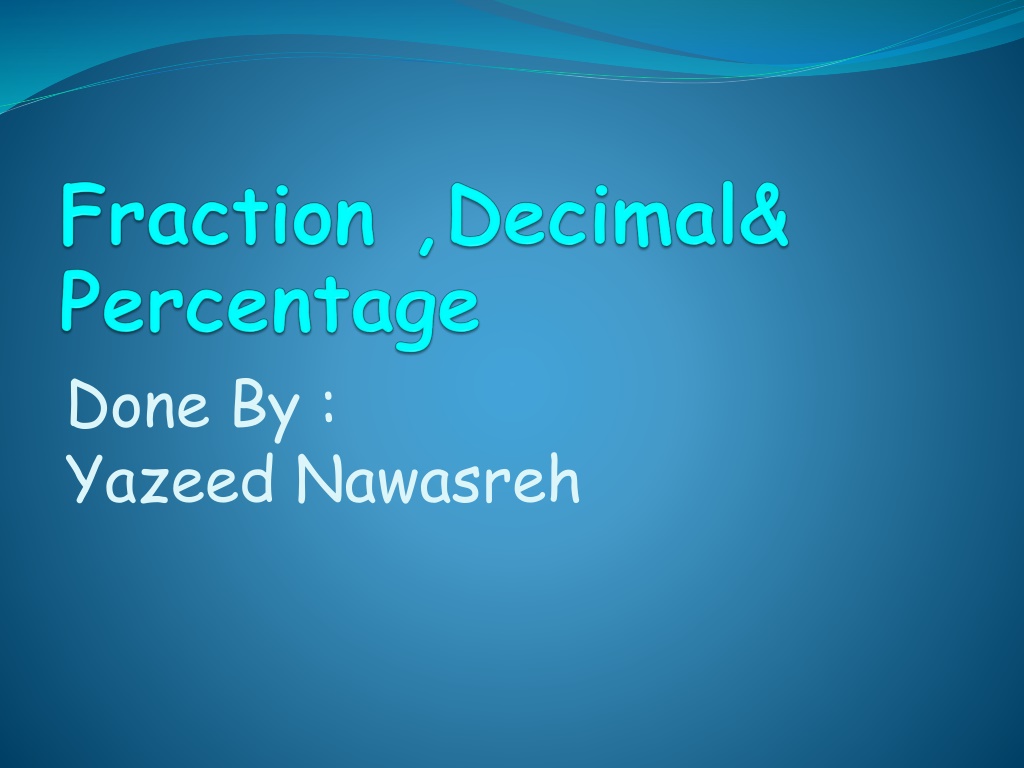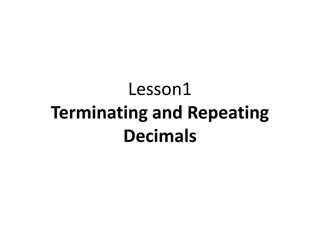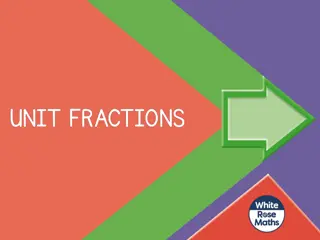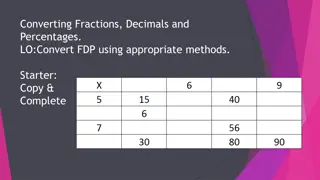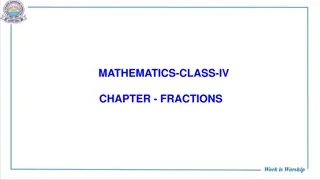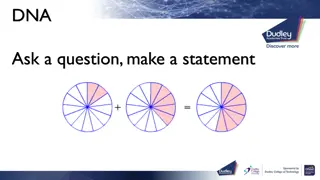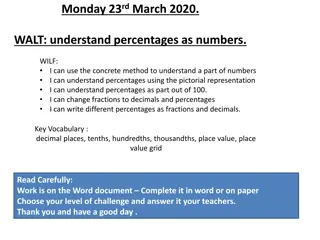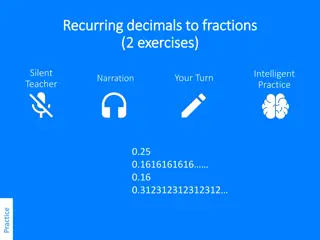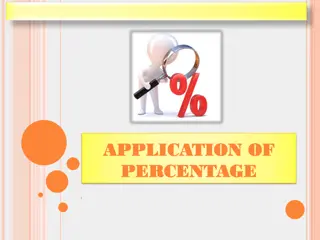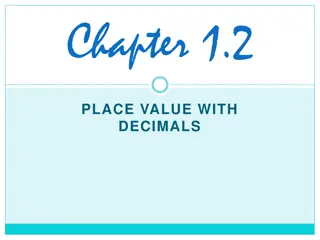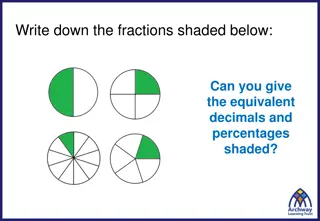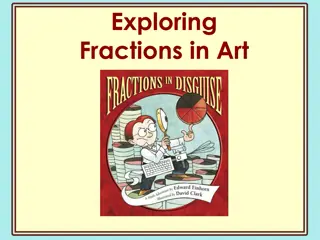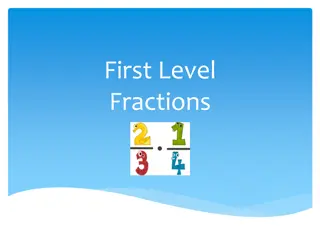Understanding Fractions, Percentages, and Decimals: A Comprehensive Guide
Explore the world of fractions, percentages, and decimals through simple problems and equivalent fractions. Learn to find percentages of quantities and understand the relationships between these mathematical concepts. Discover the equivalence between fractions, decimals, and percentages in a variety of contexts.
Download Presentation

Please find below an Image/Link to download the presentation.
The content on the website is provided AS IS for your information and personal use only. It may not be sold, licensed, or shared on other websites without obtaining consent from the author. Download presentation by click this link. If you encounter any issues during the download, it is possible that the publisher has removed the file from their server.
E N D
Presentation Transcript
Done By : Yazeed Nawasreh
Starter Divide and multiply the following by 10. 10 10 40 120 34.1
Answers Mark your work 10 10 400 4 40 1200 12 120 341 3.41 34.1
Fractions, Percentages and Decimals Learning Objectives: To be able to Understand equivalent fractions. Key words Find 10 % of a quantity. Equivalent Fractions Solve simple problems involving percentages, fractions and decimals. Decimals Percent
Equivalent fractions What does equivalent mean?
Learning Objective: To be able to Understand equivalent fractions. Write down Three equivalent fractions of 4 5
Learning Objective: To be able to find 10 % of a quantity. Find 10 % of a quantity 10 % of 40 10 % of 208 10 % of 67.4
0.50 50/100 50%
0.25 25/100 25%
0.75 75/100 75%
0.18 18/100 18%
0.04 4/100 4%
Fractions, Decimals and Percentages Fraction 1 3 4 5 2 6 7 8 9 1 0 10 10 10 10 10 10 10 10 10 1 2 Decimal 1 0.5 0 0.7 0.8 0.2 0.6 0.9 0.1 0.3 0.4 1 2 Percentage 100% 0% 70% 90% 20% 30% 40% 50% 80% 60% 10% Just different ways of saying the same thing.
Answers to the matching activity 10% 0.1 10/100 40% 0.4 40/100 70% 0.7 70/100 100% 1 100/100 33 % 0.33 33/100 67% 0.67 67/100
1. What is equivalent to: 1 2 2 1 20% 50% 1.2
2. What is equivalent to: 1 1 10 10 2 5 0.01 10%
3. What is equivalent to: 0.2 0.2 2 2 10 2% 100
8. What is equivalent to: 1 1 5 5 0.5 20% 5%
9. What is equivalent to: 0.06 0.06 6 10 6% 60%
